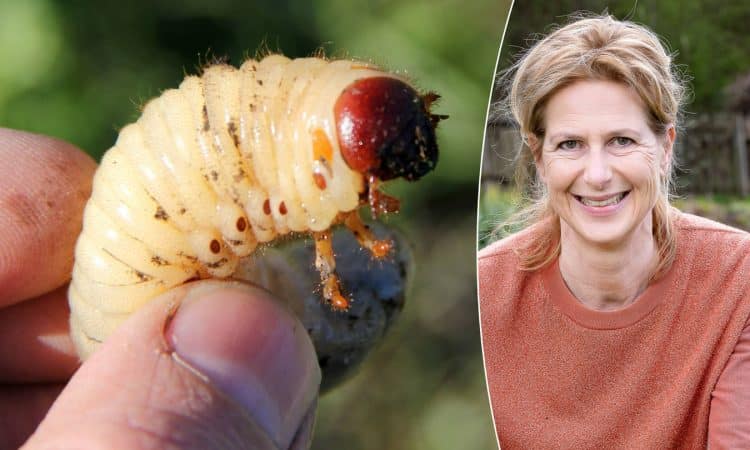Don’t Let Larvae Destroy Your Lawn! Learn Why Manual Removal Fails and What Works Instead

We all know how unsettling it can be to see those sudden bare patches on your lawn and those noticeably loose sods. It can really take the wind out of your sails. And if you happen to see birds like crows pecking intensively at the grass with no visible surface cause, there’s a good chance that insect larvae might be the reason why. It’s so easy for them to wreak havoc beneath the surface, feeding on grass roots and causing damage that you might not immediately notice.
Our gardening expert, Laurence Machiels, explains that there are several types of insect larvae that could be causing these issues. The most common culprits are grubs, which are the larvae of various beetles, including chafer beetles and Japanese beetles. These grubs live underground and feed on the roots of grass, leading to those unsightly patches on your lawn.
What can you do to combat these lawn pests?
1. Identify the Pest: The first step in dealing with lawn pests is to correctly identify which type of larvae is causing the problem. This can usually be done by inspecting the affected areas closely. Look for white, C-shaped grubs just below the surface of the grass.
2. Natural Predators: One way to combat these pests naturally is to encourage the presence of their natural predators in your garden. Birds, such as starlings and robins, feed on these grubs. Attracting these birds with bird feeders or nesting boxes may help reduce the larvae population.
3. Nematodes: Beneficial nematodes can be applied to the soil. These microscopic worms enter the bodies of grubs and release a bacterium that kills them. This method is environmentally friendly and does not harm plants, pets, or humans.
4. Lawn Aeration: Aerating your lawn can disrupt the life cycle of the grubs by exposing them to predators and the elements. Aerating involves making holes throughout your lawn to improve water and nutrient penetration, which also helps to strengthen grass roots and potentially reduce the appeal of your lawn to female beetles laying eggs.
5. Chemical Treatments: If natural methods are not effective, you might consider using a targeted insecticide. It’s crucial to choose a product that specifically targets grubs without causing excessive harm to other wildlife. Always follow the manufacturer’s instructions and try to apply these treatments when the larvae are young and most vulnerable, usually in late summer or early fall.
6. Maintain Lawn Health: Maintaining the overall health of your lawn can also prevent severe damage. This includes regular feeding, mowing at the correct height, and watering appropriately. A healthy lawn is more resilient and can recover from grub damage more effectively.
By understanding the problem and exploring these solutions, you can take steps to restore your lawn to its lush, green state and prevent future infestations.

